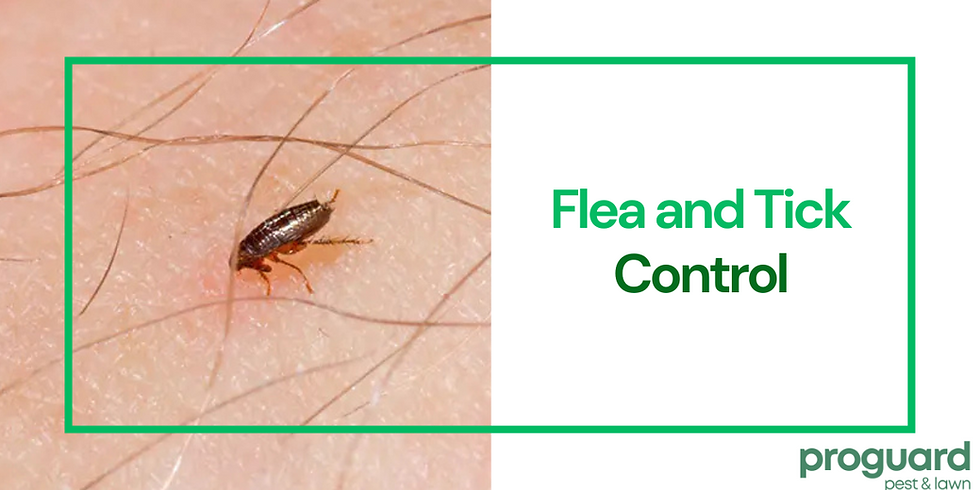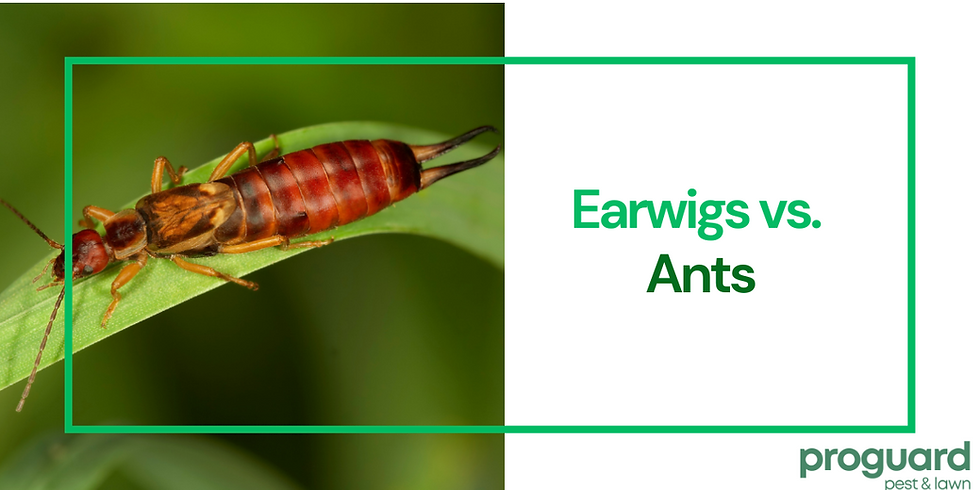Creature Feature: Clover Mites
- ProGuard Pest Control

- May 27, 2024
- 3 min read
What Are Clover Mites?
Clover mites (Bryobia praetiosa) are tiny arachnids, measuring less than 1 millimeter in length, that belong to the spider family. These little creatures are often recognized by their reddish or brownish color and their distinctive long front legs, which they use almost like antennae. Clover mites are known for their remarkable ability to reproduce rapidly and their tendency to invade homes in large numbers, especially during the cooler months of the year.
Life Cycle and Behavior
Clover mites thrive in cooler temperatures, making them most active in the spring and fall. They lay their eggs in cracks and crevices in the soil, under tree bark, and in other protected areas. These eggs can survive extreme conditions, including hot summers and cold winters, and hatch when the weather becomes favorable.
Clover mites feed primarily on plant material, including grass, clover, and other vegetation. They do not pose a threat to humans or pets and do not damage structures, but their sheer numbers can be a nuisance, especially when they invade homes.
Why Are Clover Mites a Problem?
While clover mites do not bite or transmit diseases, their presence can be quite bothersome. They often enter homes through tiny cracks and gaps around windows, doors, and foundations. Once inside, they can leave behind red stains when crushed, which can be difficult to clean and may damage fabrics and surfaces. Their tendency to invade in large numbers can make them overwhelming to deal with.
How to Prevent Clover Mites
Preventing a clover mite invasion involves a combination of outdoor and indoor measures. Here are some tips to help keep these tiny pests at bay:
Outdoor Prevention
Seal Cracks and Gaps: Inspect the exterior of your home for any cracks, gaps, or openings. Seal these with caulk or weather stripping to prevent clover mites from finding their way inside.
Create a Barrier: Remove grass, leaves, and other vegetation from around the foundation of your home. A vegetation-free barrier of about 18-24 inches can discourage clover mites from migrating towards your home.
Plant Selection: Consider planting flowers and shrubs that are less attractive to clover mites. Geraniums, marigolds, and chrysanthemums are some examples of plants that clover mites tend to avoid.
Regular Lawn Maintenance: Keep your lawn well-maintained by regularly mowing and removing excess thatch. Over-fertilized and lush lawns are more attractive to clover mites, so avoid over-fertilizing your yard.
Indoor Prevention
Window and Door Screens: Ensure that all window and door screens are intact and free from holes. Use fine mesh screens to prevent even the tiniest clover mites from entering.
Vacuum Regularly: Regular vacuuming can help remove clover mites that have made their way indoors. Be sure to dispose of the vacuum bag immediately to prevent re-infestation.
Use Sticky Traps: Place sticky traps near windows and entry points to catch clover mites before they spread throughout your home.
How to Get Rid of Clover Mites
If clover mites have already invaded your home, there are several methods you can use to eliminate them:
Vacuuming: As mentioned earlier, vacuuming is an effective way to remove clover mites. Focus on areas where they are most commonly found, such as windowsills and door frames.
Damp Cloth: Wipe surfaces with a damp cloth to remove clover mites without crushing them and causing stains.
Insecticidal Soap: Use insecticidal soap or a mild dish soap solution to treat areas where clover mites are present. Be sure to follow the manufacturer's instructions for safe and effective use.
Professional Pest Control: If the infestation is severe, consider contacting a professional pest control service. They have the expertise and tools to effectively eliminate clover mites and prevent future invasions.
Conclusion
Clover mites may be small, but their numbers can make them a big nuisance. By understanding their behavior and taking proactive measures to prevent and eliminate them, you can keep your home free from these tiny invaders. Regular maintenance, proper sealing of entry points, and timely intervention are key to managing clover mite infestations. With these tips, you can enjoy a clover mite-free environment all year round.

%20(7).png)





Comments